Ripsalis is a rather unusual plant that is part of the Cactus family. Today, there are more than 50 varieties of the genus Ripsalis. In the wild, the flower grows in the humid tropical climate of Africa, South Asia, India and South America. You can meet it in the forests on trees, wet rocks, and some species grow on the ground.
The plant has another name - twig, which is associated with a large number of shoots, twigs. It is often grown as an ampel plant, because its stems hang down in an elegant cascade. There are also varieties that can be shaped like a round hat.
Ripsalis grows well at home, and with proper care for several years, you can grow a large spectacular perennial, the decorativeness of which can be estimated in the photo.
Content
Ripsalis characterization and species diversity
Epiphytic perennial has highly branched stems, the length of which is from 70 to 100 cm. The width of one shoot varies in the range of 3-4 mm. The root system is superficial, therefore, to protect itself from heavy tropical rains, the flower settles on tree trunks. The stems consist of elongated lobes, the shape of which can be ribbed, flattened or cylindrical. The surface of the lobes is covered with smooth green skin.
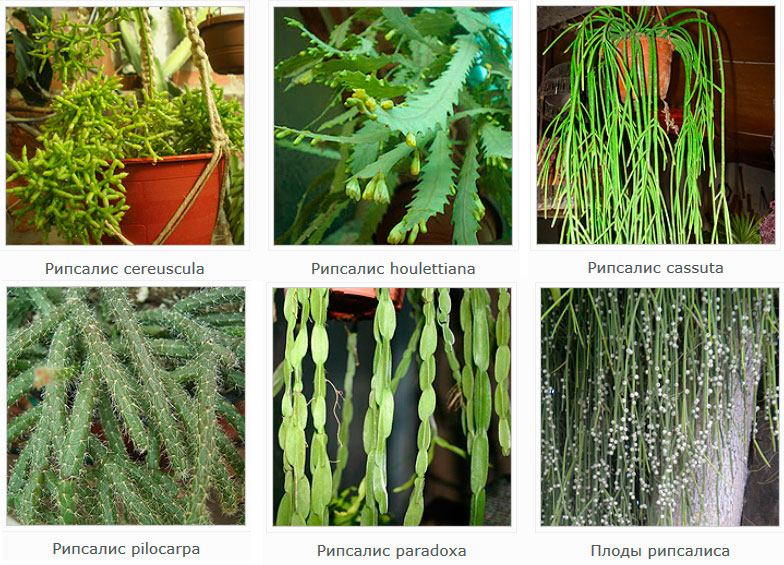
Some ripsalis have pronounced areoles, which are covered with a soft edge. Each stalk forms a rather large and dense twig. Young plants outwardly look like compact bushes, and as the lashes grow, they cascade from the flowerpot. A distinctive feature of the genus is the presence of aerial roots. During flowering, small flowers with yellow, white, orange or light pink corolla form on the stems. After flowering, the plant forms fruits, the color of which can be pink, black or white.
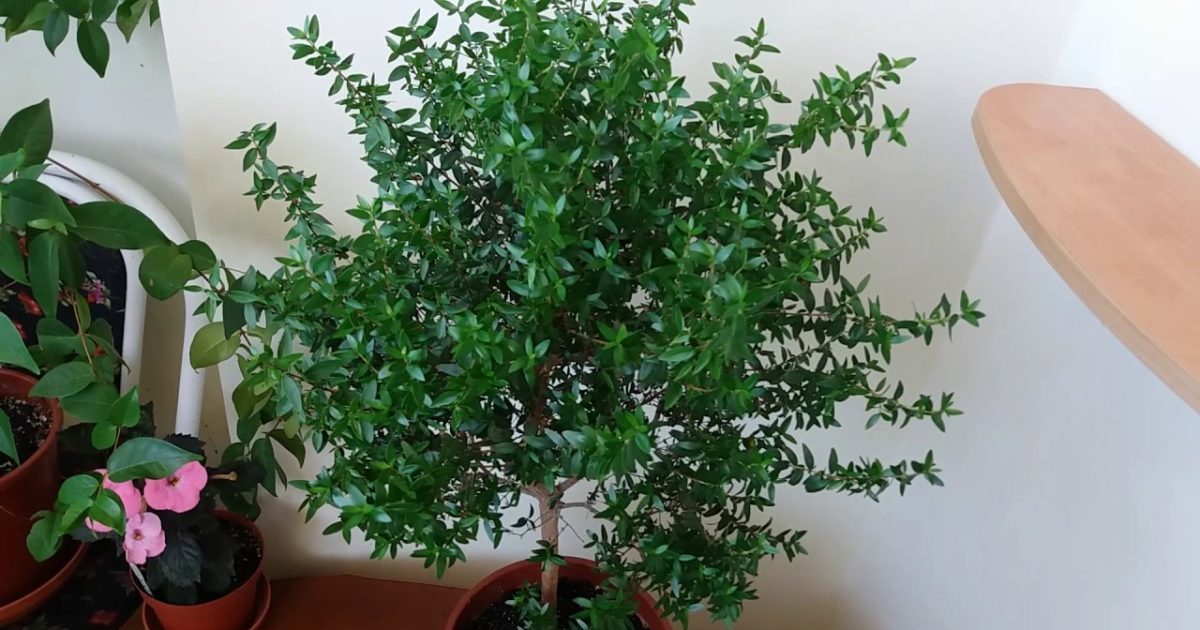 You may be interested in:
You may be interested in:Kinds
Most varieties of ripsalis can live only in the wild, and only a few can grow indoors. As indoor plants, you can grow species, with a photo and a description of which can be found below:
- Ripsalis Barcela forms narrow shoots of a cylindrical shape up to 6 cm in length. The size of the primary stems can reach 60 cm. The aerial part is covered with a dark green glossy skin. Small whitish areoles are pronounced on the stems.
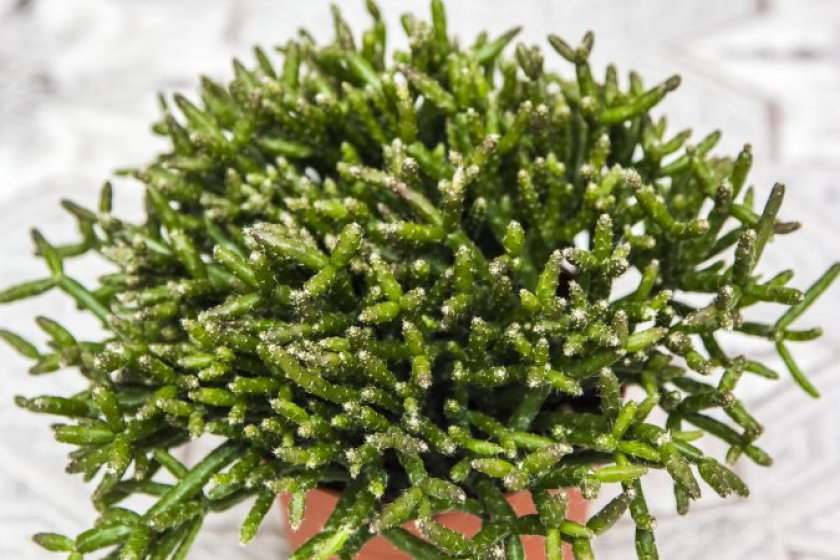
Ripsalis Barchela - Hairy ripsalis has relatively thin and long lobes. They branch well and twist slightly. The appearance of the plant resembles a pile of light green hair. Flexible stems hang gracefully down. In late autumn, the plant blooms profusely with white flowers.
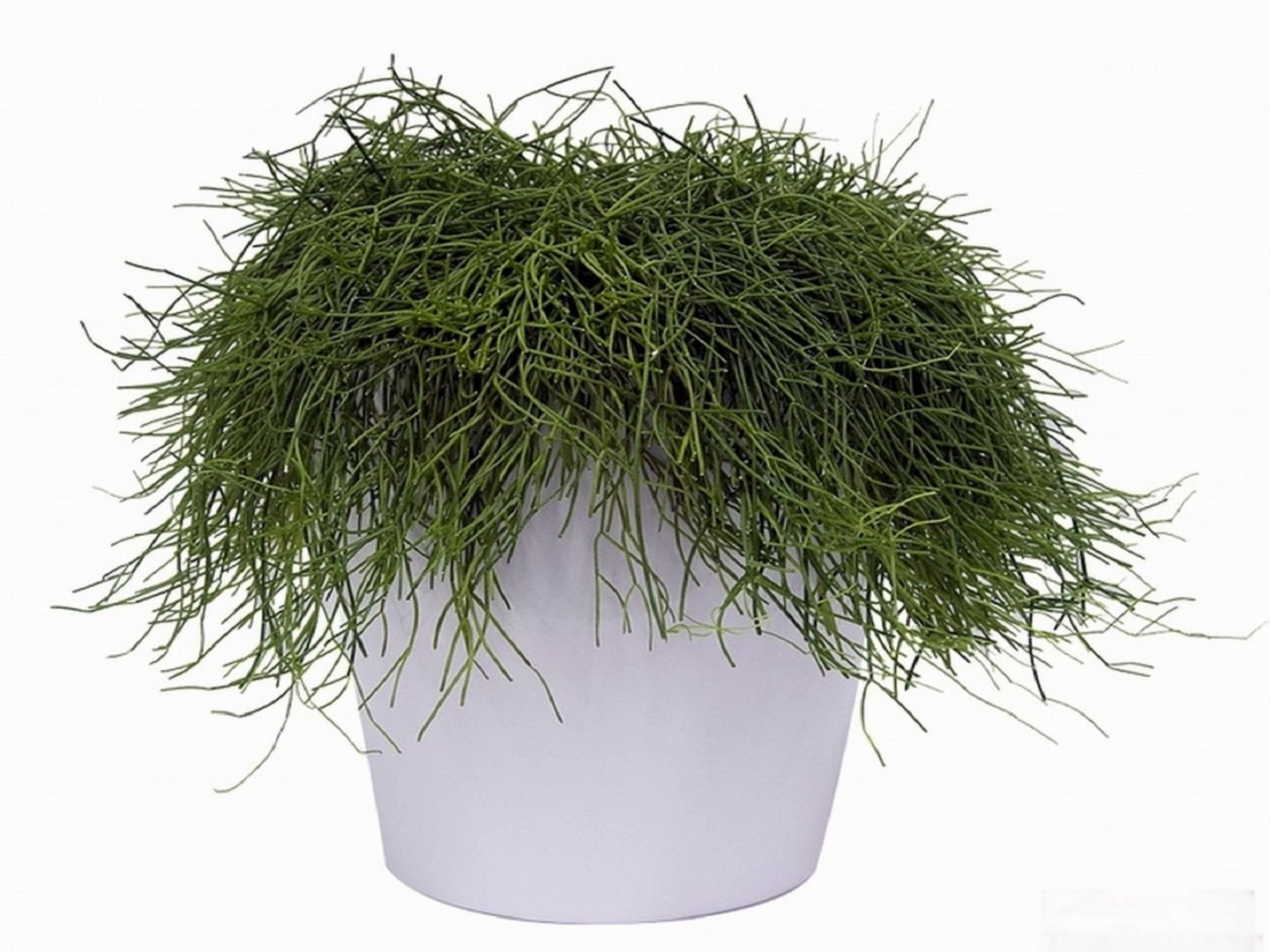
Ripsalis Hairy - Rylpsalis pilocarp is characterized by powerful shoots of dark green color. The surface of the stems is covered with light yellowish hairs. The specimen is capable of blooming several times a year. Its flowers consist of white petals and rather long stamens, which makes the flowers appear covered with pubescence.
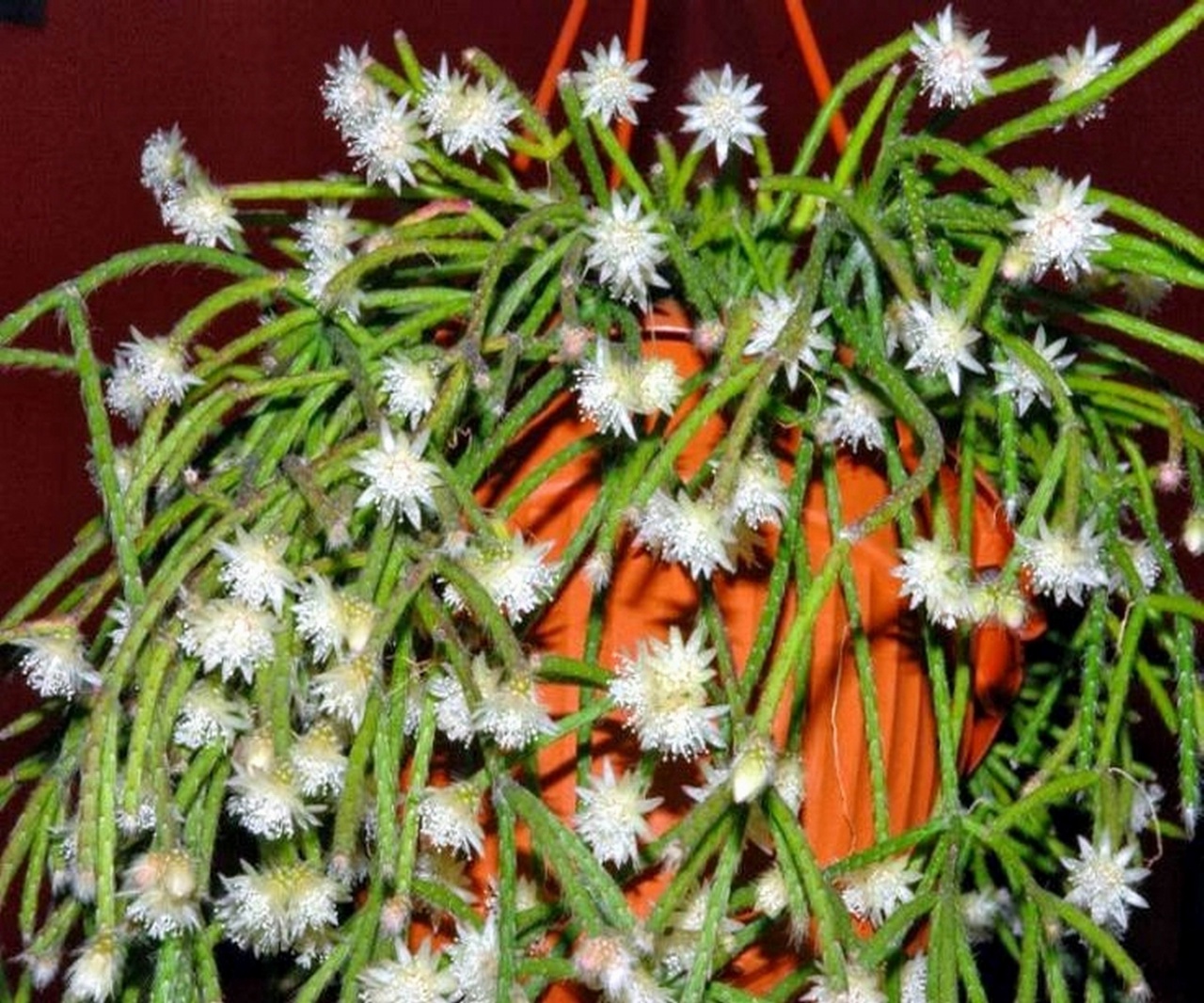
Ripsalis pilocarp - Elliptical ripsalis differs from its relatives in flat and wide segments, which are covered with areola with weak pubescence. The length of the stem can reach 2 m. Flowers are formed on the sides of each lobe. Small flowers are painted in light yellow.
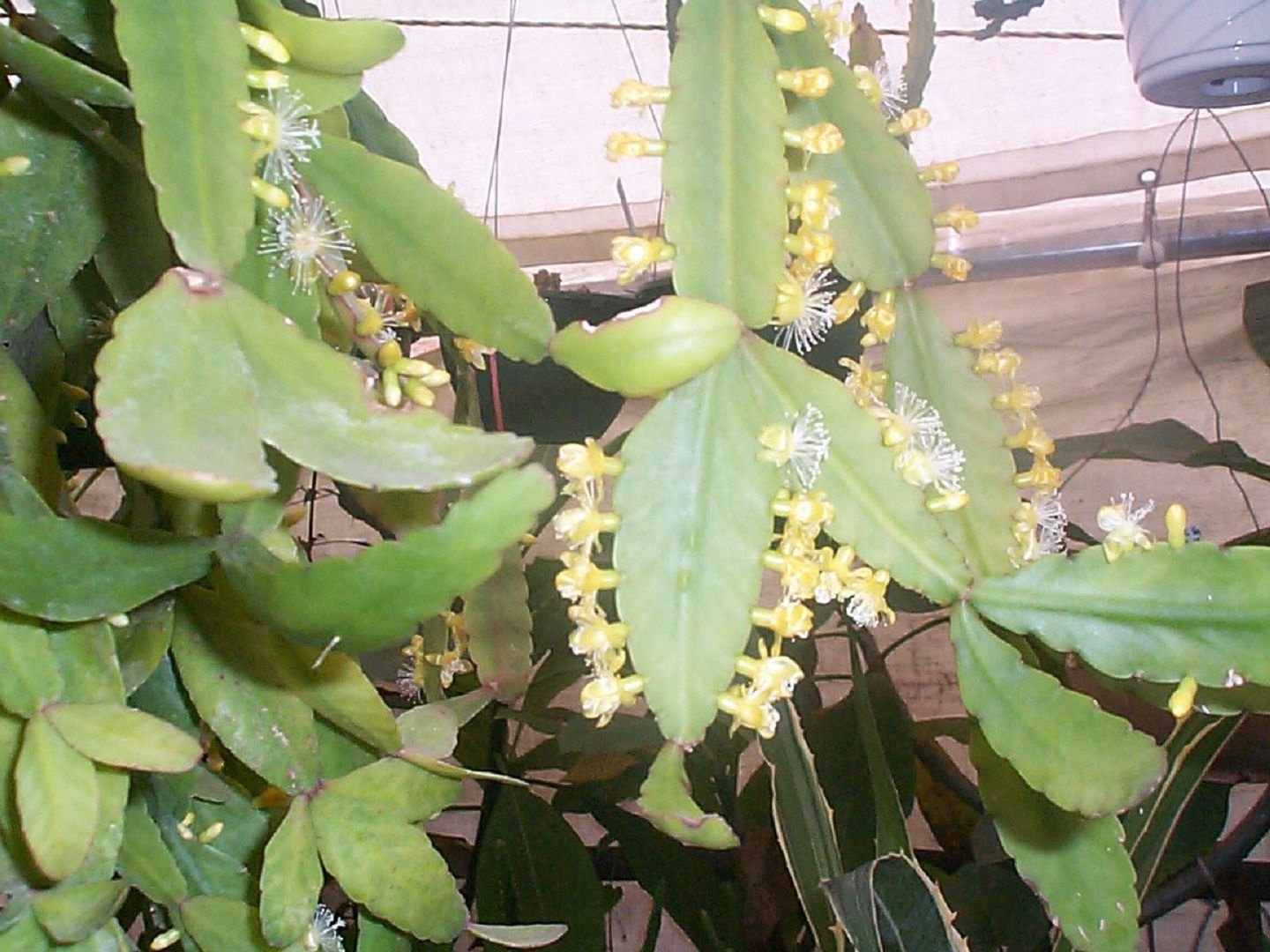
Elliptical ripsalis - The mesembryantem-shaped ripsalis is very similar to a compact spruce bush, because its stems resemble the bare branches of a spruce. Shoots have a circular cross section. Primary segments can grow about 20 cm in length, and secondary - no more than 1.5 cm. Lush small flowers have a white color.
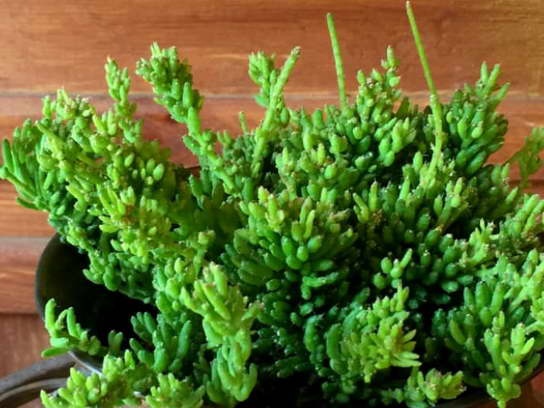
Mesembryanthemoid Ripsalis
Differences of Ripsalis from Hatiora
Ripsalis and hatiora belong to the cactus family. These related plants have striking similarities, so they are often confused, especially at a young age. As you know, ripsalis is grown at home as an ampel plant, the long shoots of which hang beautifully from hanging planters. His relative forms erect shoots, so adult plants are difficult to confuse with each other.
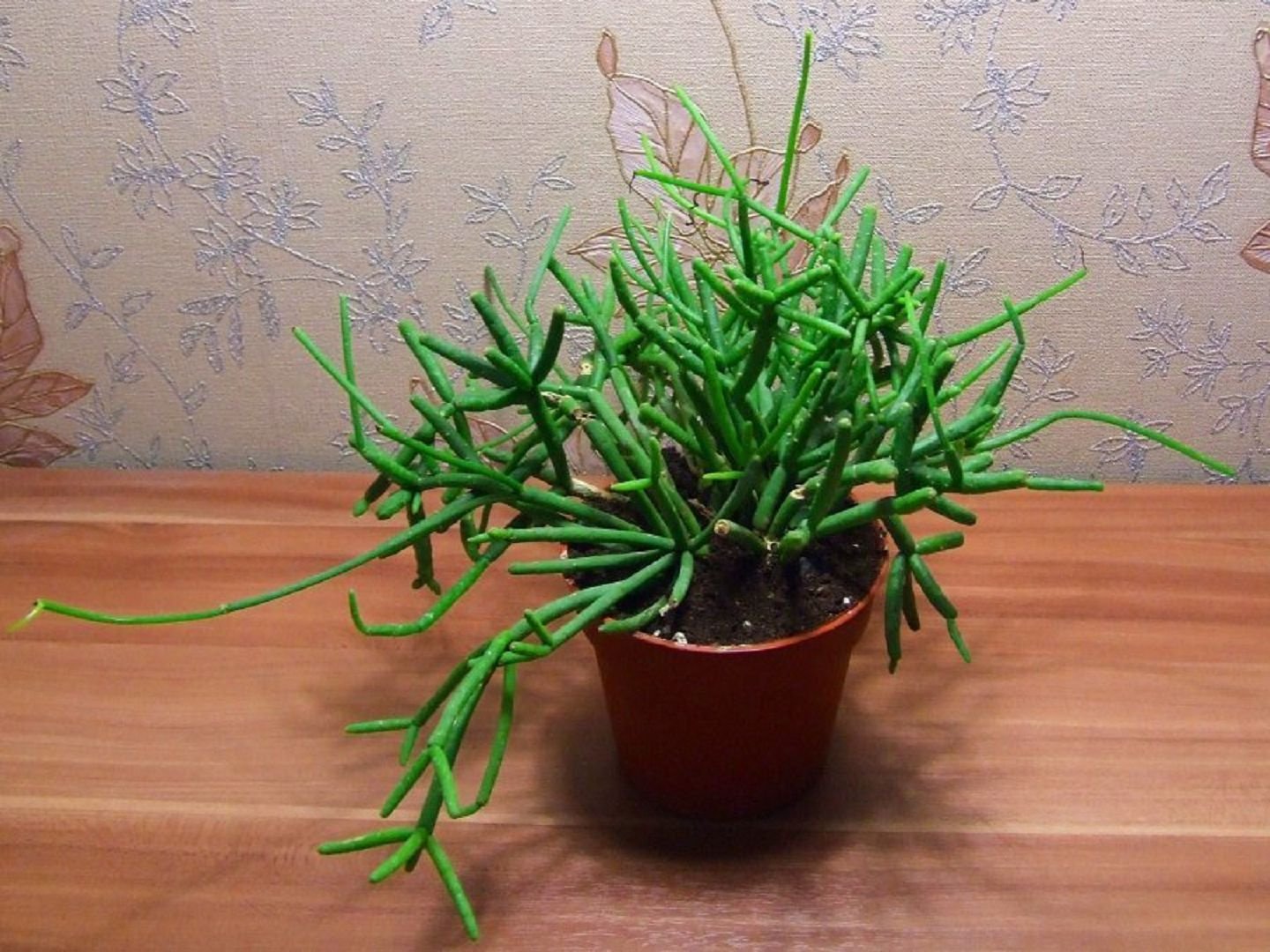
The second difference can only be seen with a thorough inspection of plants: ripsalis is characterized by oblong, elongated segments, and the hahior segments are much shorter.
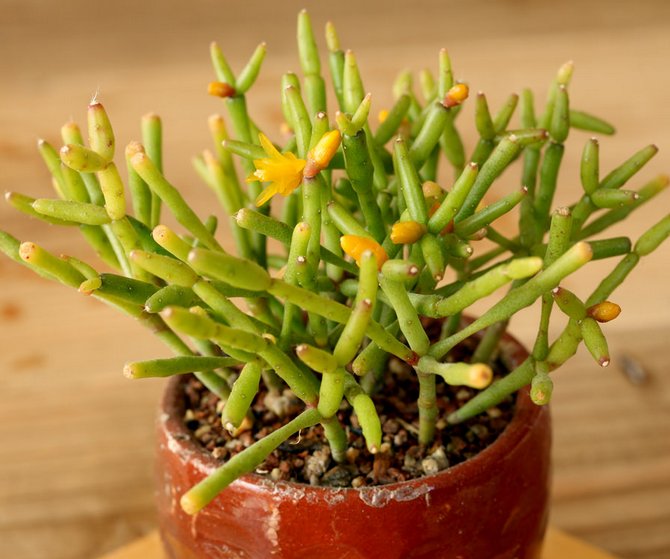
It is easy to identify the plant during the flowering period. Twig buds can grow along the entire length of the segment, while the hator opens flowers only at the ends of the segments. In addition, it has larger flowers that are colored yellow, pink or red. Ripsalis flowers are much smaller, their diameter does not exceed 2 cm. Its small flowers can be white or yellowish.
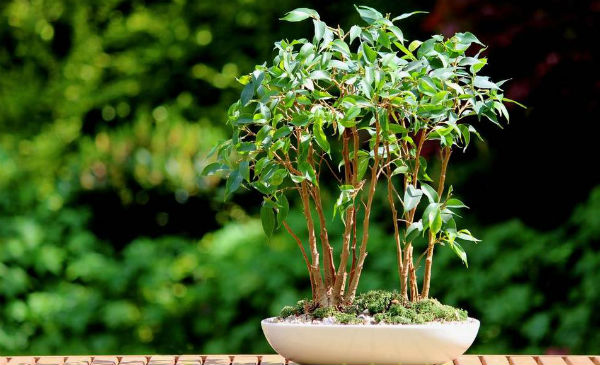 You may be interested in:
You may be interested in:Secrets and difficulties of caring for ripsalis at home
The plant belongs to unpretentious crops, so even a novice can take care of it. The flower grows quite quickly, and some species are pleased with flowering several times a year.
Lighting
The natural habitat of ripsalis is a shady rainforest, so in the house it creates the most similar conditions. Do not put a flowerpot on the windowsills of the south side, because scorching rays can harm the flower. The optimal level of lighting will be on the western or eastern windowsills, only it will be necessary to shade the plant from the hot midday rays. You can put a flowerpot in the north side or in the back of the house, but under such conditions, flowering is unlikely to occur. The ideal lighting for a cactus is partial shade.
Temperature and humidity
During the period of active development (spring - early fall), it is desirable to maintain the indoor temperature within 20 ° C. The inhabitant of shady forests does not like the heat, but also does not withstand the cold air. In winter, the ambient temperature should not fall below 12 ° C, it should be about 15 ° C. On hot days, you should often ventilate the room or take the pot out into the shady place. The cactus is resistant to drafts, but strong winds can damage fragile stems.
The flower perfectly adapts to the humidity of the house, so there is no need to create an additional source of moisture. It is advised to periodically give him a warm shower, and in winter (if the flowerpot is near heat sources), it is advisable to spray the aerial part with water at room temperature.
Watering and feeding
This variety of cactus refers to hygrophilous plants, so watering should be plentiful and regular. The need for watering is determined by the upper layer of soil, which should dry to 1/3 of the depth of the landing tank. For the procedure, you need to take only soft water - rain, filtered or settled (at least two days). During winter holidays in a cool place, watering is reduced.
Fertilizers are applied only from March to October, when the plant is actively growing. They feed it with liquid mineral complexes intended for cacti or succulents. The amount of nutrients should not exceed once every two weeks. If it is not possible to purchase special fertilizers, you can use other dressings for indoor flowers, only the dosage should be half as much.
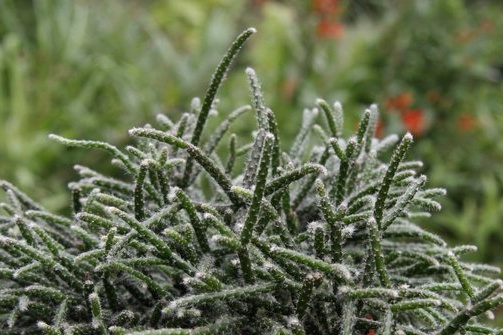
Diseases and Pests
Most often, the plant suffers from chlorosis, which is caused by a lack of lighting or improperly selected soil. The affected flower acquires a yellowish tint, the aerial part decreases in size, altered leaves can crumble. Prevention of chlorosis is to ensure sufficient lighting and planting a flower in a substrate with an acidity of 5-5.5 pH. It happens that the cause of the disease becomes poor-quality tap water.
The flower can also be damaged by insects: scabies and spider mites. The fight against scale insects should be approached very responsibly, because simply treating the plant with an insecticide is not enough. First of all, adults are manually collected from a cactus. After removing the pests, the aerial part is washed under a warm shower and left to dry. Then proceed to the processing of insecticidal drugs.
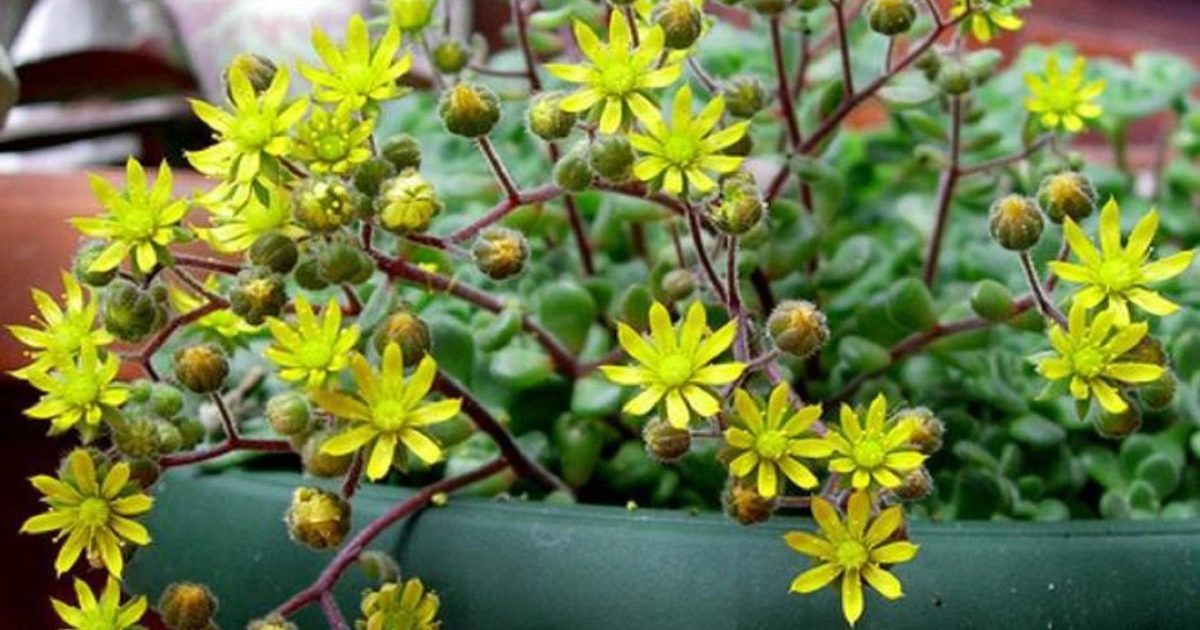 You may be interested in:
You may be interested in:With low humidity, spider mites may appear. The first step is to take care of increasing the humidity in the room. Ripsalis is treated with Actara, Apollo or Klischevit.
How to propagate and transplant a flower at home
Like all indoor perennials, a home cactus needs a periodic transplant. The frequency of the procedure depends on the age of the flower:
- young cacti require an annual transplant;
- medium-sized specimens are transplanted every 2-3 years;
- Large flowers can be replanted no more than once every five years.
Often it is not worth replanting a flower, because its brittle roots are very easy to damage. Capacity for landing choose shallow, but wide. It can be floor flowerpots or hanging cache-pots. The soil should have a neutral or slightly acidic reaction. The substrate should include the following components:
- peat;
- deciduous humus;
- turf land;
- sand.
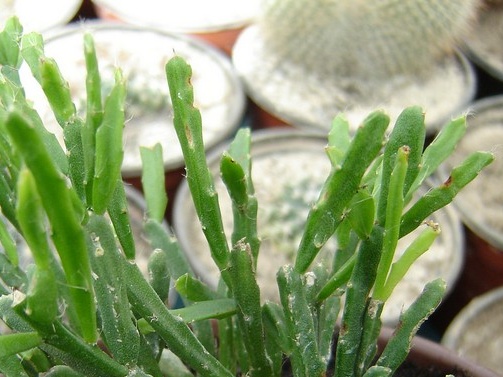
After the procedure, watering should be reduced during the week.
The twig is propagated in two ways: by cuttings and seeds. During seed propagation, it is worth knowing that planting material should be planted immediately after collection, because during storage the seeds quickly lose their germination. In a weak solution of potassium permanganate, seeds are placed for disinfection, after which they are sown in a small container filled with vermiculite and peat. It is not necessary to fill up with earth from above.
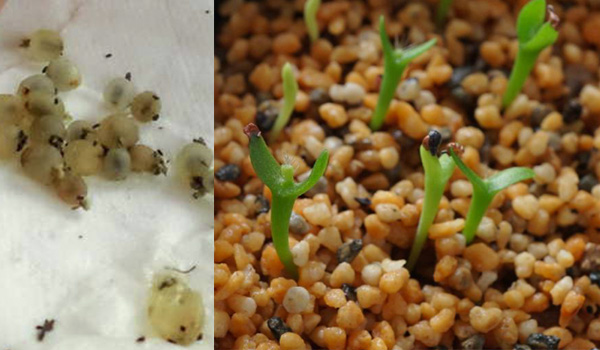
The soil is moistened and covered with glass or film.The container is transferred to a bright room with a temperature of about 24 ° C and a mini-greenhouse is aired daily.
For propagation by cuttings from an adult flower, the cuttings with several lobes are unscrewed (not cut), dried, then planted in a moist soil mixture of sand and peat.
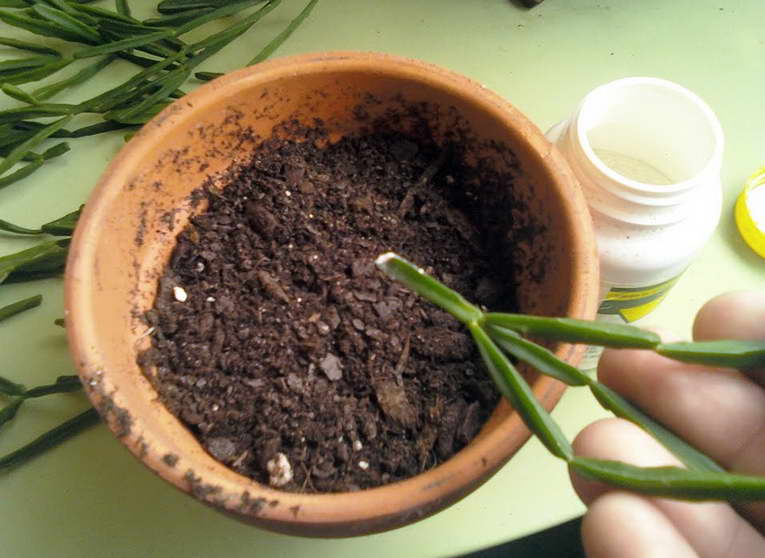
The stem will take root after 7-14 days, after which young segments will begin to form.
Common Growing Questions
A home cactus is unpretentious in care, therefore, every lover of flowers can keep it at home. Ampel species will be an excellent decoration for any corner of the apartment, and lush flowering will give the green shoots even more decorative.

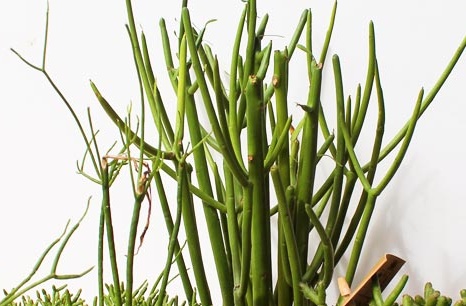
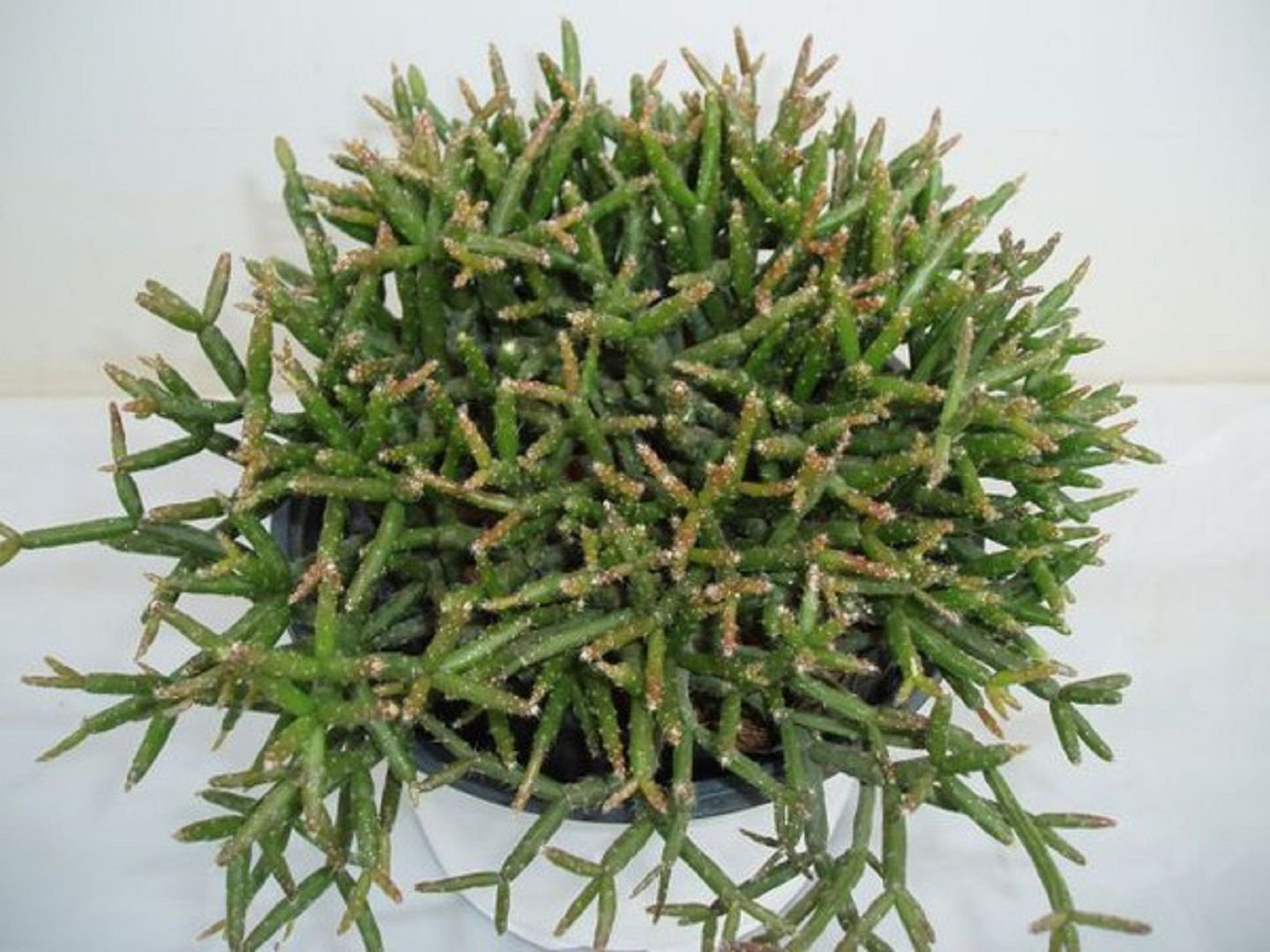
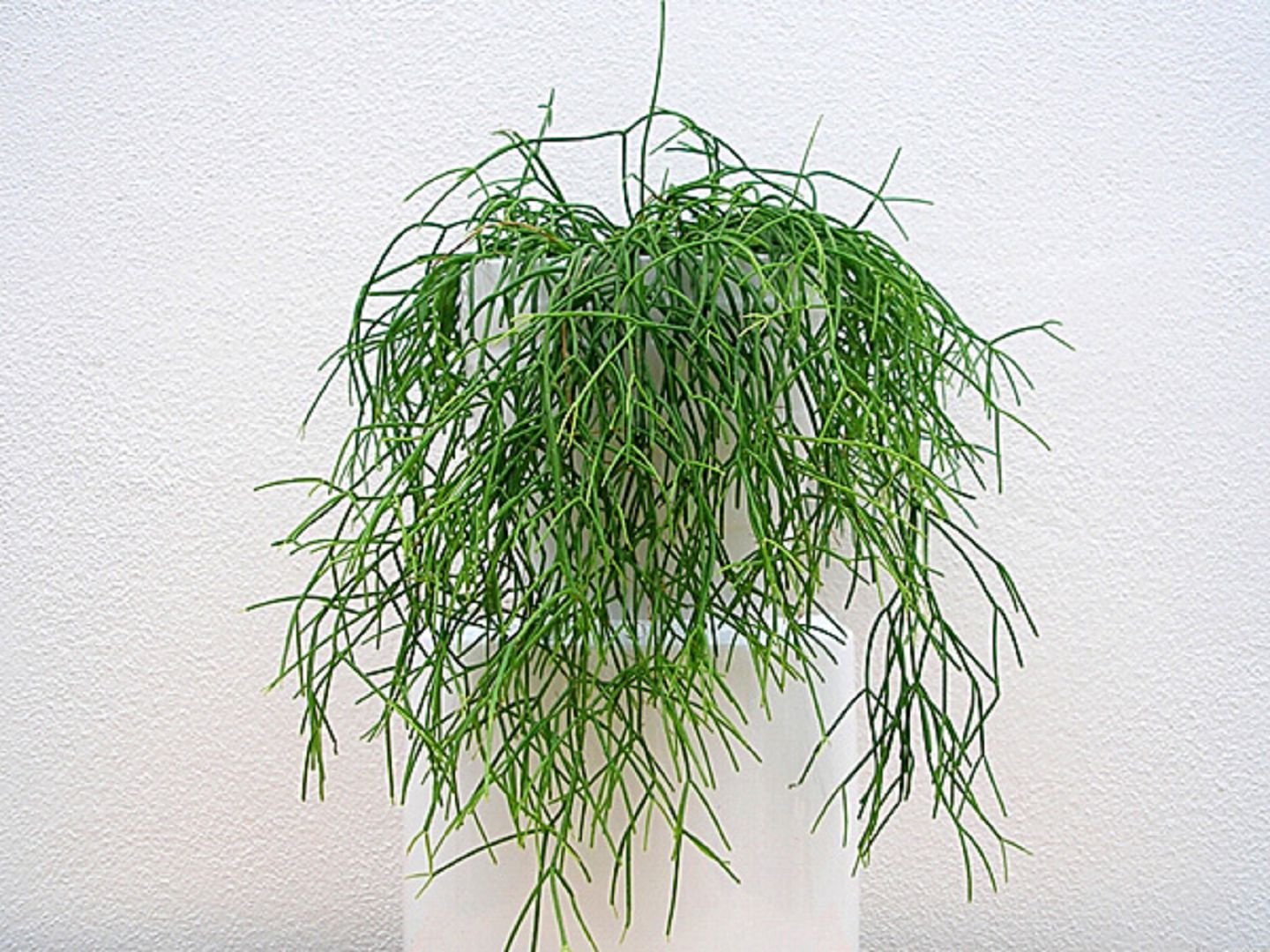



 10 beautiful annuals that bloom all summer
10 beautiful annuals that bloom all summer Sow in the ground, without seedlings: 10 beautiful and unpretentious flowers
Sow in the ground, without seedlings: 10 beautiful and unpretentious flowers Platicodon planting and outdoor care
Platicodon planting and outdoor care Hosta - planting and care in the open ground in the Urals
Hosta - planting and care in the open ground in the Urals